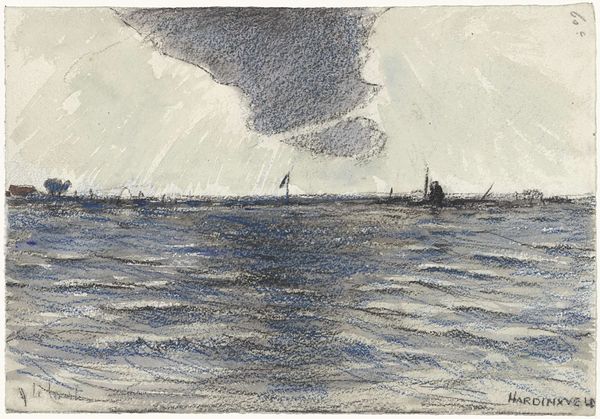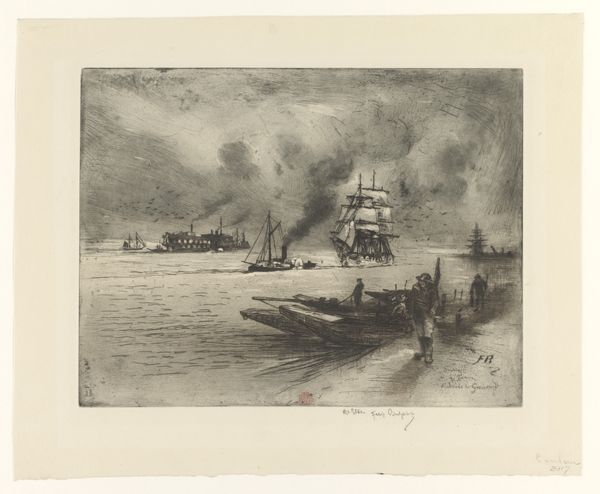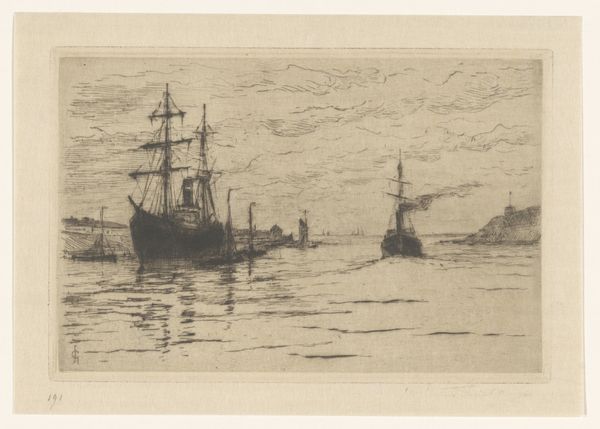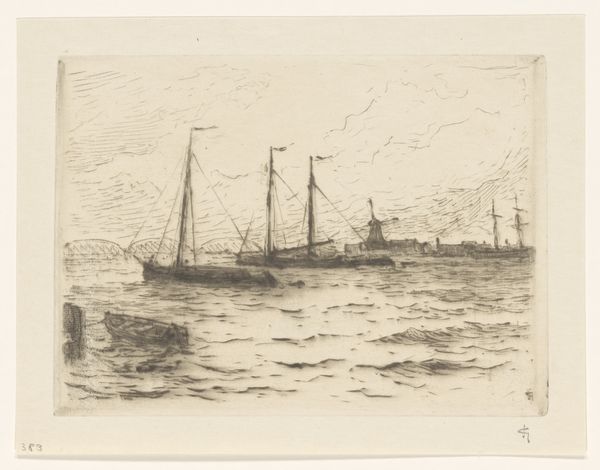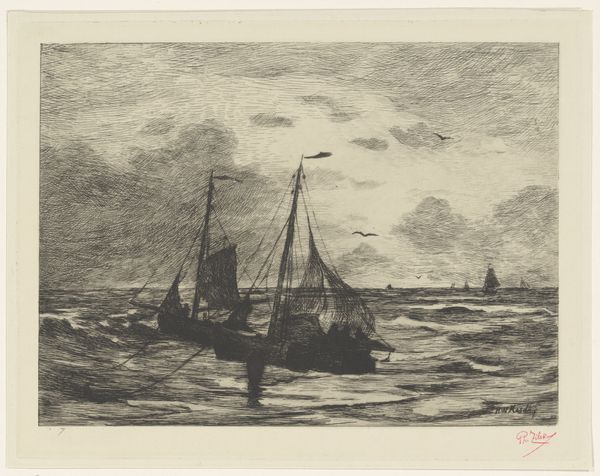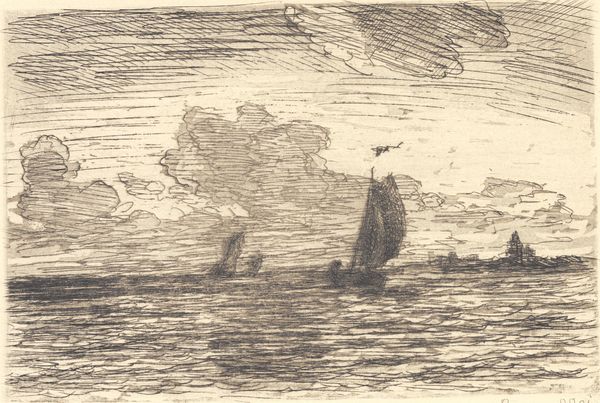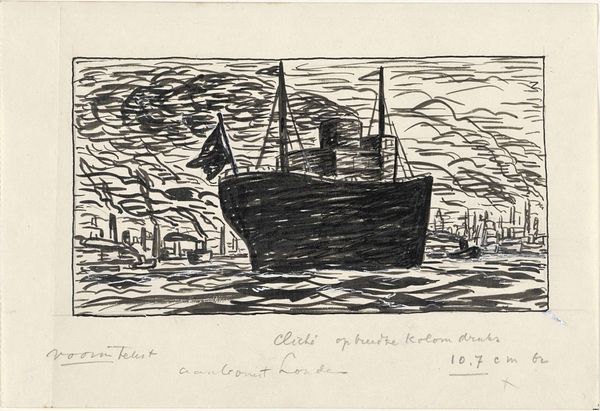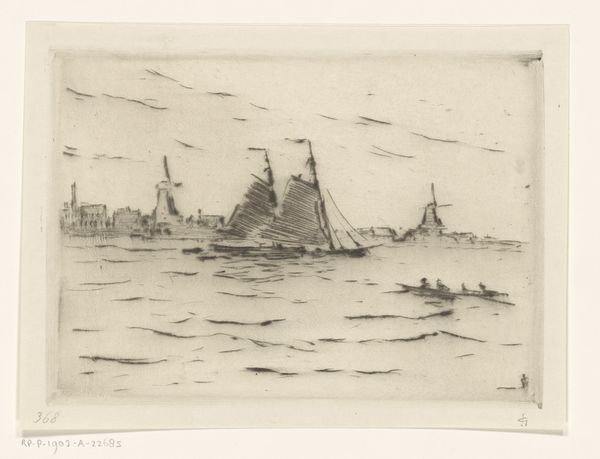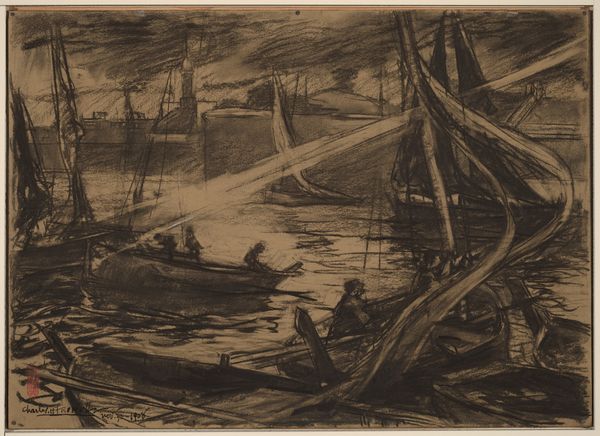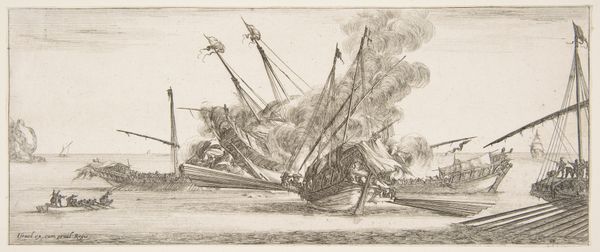
Dimensions: 330 x 445 cm
Copyright: Public domain US
Curator: Look at this compelling 1923 drawing by Mstislav Dobuzhinsky, titled "Peter and Paul Fortress," executed in ink. What's your immediate impression? Editor: Foreboding. The density of the dark ink against the white paper creates such a heavy atmosphere. Those looming clouds… they almost smother the architectural details. Curator: It's interesting you pick up on that sense of oppression. Dobuzhinsky created this work during a period of significant political and social upheaval in Russia. The Peter and Paul Fortress, originally built as a military structure, had become a symbol of imprisonment and Tsarist authority. Think about its history. Editor: The stark silhouette of the fortress amplifies that, doesn't it? The artist’s choice to emphasize shape rather than texture. The contrast between the choppy lines in the water versus the rigid architectural lines of the fortress and its reflection create tension. The flags add a note of festivity that just doesn't align with the overall ominous tone. Curator: Precisely. The flags could symbolize the attempt by the Bolshevik regime to repurpose the space, to recast its significance, while the collective memory of its repressive past continues to haunt the present. Symbolism was central to the Russian Avant-Garde movement to which he was tied, with themes addressing modern urban life. Editor: I’m still drawn to how the sky seems to be pressing down. And how Dobuzhinsky captures light just using gradations of linear hatching, rather than tone... incredibly controlled but simultaneously volatile. Curator: Yes, the line work throughout creates a dynamic tension between precision and a sense of impending chaos. He lived in a precarious situation, at times supportive of the regime, yet always teetering on the edge of political exile. Editor: Ultimately, this close reading highlights the beauty found even within bleakness. A study of lines, contrasts and gradations. Curator: It reminds us that art is rarely created in a vacuum. Works of art echo, absorb and redirect cultural conversations.
Comments
No comments
Be the first to comment and join the conversation on the ultimate creative platform.

